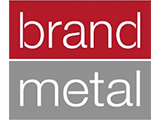Automation Will Improve Workforce, Not Destroy It
Anxiety over automation is not new. We have seen it dating back to the 18th century during the Industrial Revolution as textile workers protested the rise of the steam engine. For the past several years, warnings about the impacts of automation have been coming in Nova Scotia. Automation — evolving into artificial intelligence — is increasingly present throughout the province, from meter readers and transit announcements, to grocery operations and food delivery. This trend changes what work is done by humans and what can be handled by machines.
On its face, it is easy to see artificial intelligence as a boon to software developers working in big cities with bean bag chairs and well-stocked beer fridges and a bane for blue-collar workers throughout rural Nova Scotia. In practice, the story is more complicated — and the growth of our own artificial intelligence business is a good example that AI does not need to go hand in hand with anxiety.
Our company, Slyce, provides visual search to retailers and other industries across the globe. We are proud to serve Home Depot, Best Buy, Tommy Hilfiger, Neiman Marcus, Nordstrom and other leading companies in a variety of retail industries. We answer the questions ‘What is that?’ and ‘Where can I get buy it?’ for consumers — whether it is the great pair of shoes that you see on the street or the “thingamajig” in the middle of a plumbing project at home. Yes, we have a team of developers in Halifax working on sophisticated algorithms, but we also have a dedicated team of data specialists in New Waterford that are critical to the visual search results we produce for our retail partners.
Machine learning — one aspect of artificial intelligence development — still requires someone or something to teach the machines. And, while emerging areas such as cloud robotics may someday enable machines to learn from each other, most convolutional neural networks — the core cognitive element of most AI systems — still require training data developed by humans. In some cases, companies will simply download the internet, or a portion of it, to attempt to train their AI systems. This approach is bulky, clumsy and ultimately ineffective. After all, if you wouldn’t let your child learn from an unsupervised tour of the internet, why would you let your AI system?
So, in a world where artificial intelligence and human intelligence are mutually reinforcing — rather than purely oppositional — the question becomes how to best organize the two to work together. One popular way is offshoring — sending work to a dozen different low-cost countries to drive down labour costs to the lowest possible level. However, just as people do not always enjoy working with a call centre to a remote offshore location with no idea of your situation (“what do you mean by Capri pants?”), machines need humans with the correct consumer context to be effective trainers.
Another popular approach is called Mechanical Turk, a system run by Amazon. Mechanical Turk takes small five to 10 second tasks — such as reviewing an image for potential pornography — and distributes them to anonymous workers to complete. This approach is designed to save developers time writing a complex computer program when only a simple task is required. This challenge is that ‘turking’ is tasks without training. The challenge is that it is not good for any kind of learning or quality control. As soon as any more sophisticated training or quality control is needed, the Mechanical Turk method breaks down for machine learning.
Thanks to support from the Atlantic Canada Opportunities Agency and the National Research Council, our team in Nova Scotia has developed millions of curated data points that we use to drive our machine learning systems. This work led to Slyce developing the world’s best machine vision system for detection of logos — convincingly beating current published industry benchmarks. At Slyce, the work done by humans is as important as the work done by machines. The achievements we have made have only been possible by the training — of both humans and machines — necessary to make complex tasks possible.
The rise of automation does not need to be synonymous with job loss. It does not need to make humans irrelevant or unemployable. Instead of replacing us, automation should augment us and help us continue to strive for excellence and improvement in our jobs.
Ted Mann is the CEO of Slyce, a visual search company. The company’s operations centre is based in New Waterford.






0
Log In or Sign Up to add a comment.- 1
arrow-eseek-e1 - 1 of 1 items